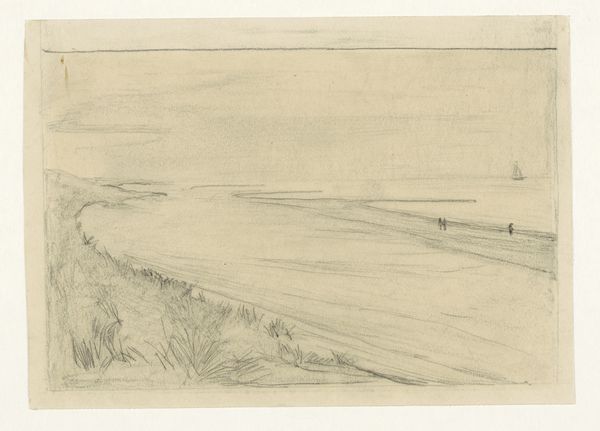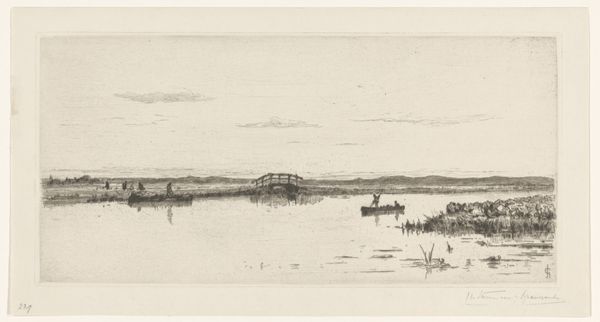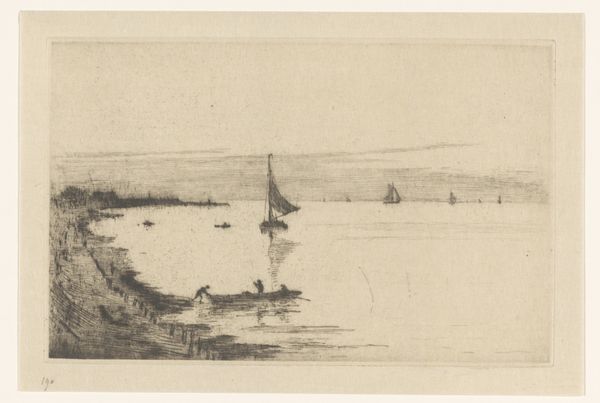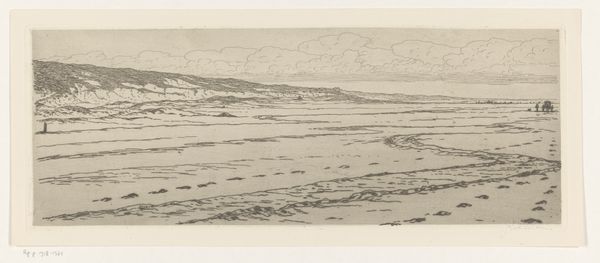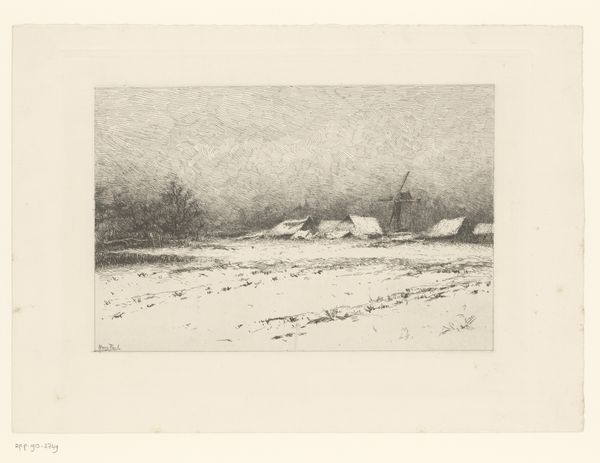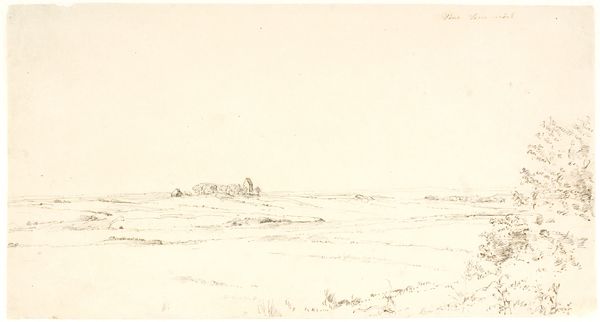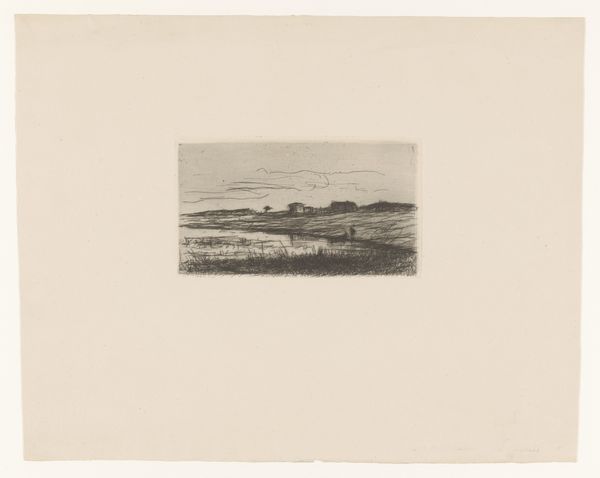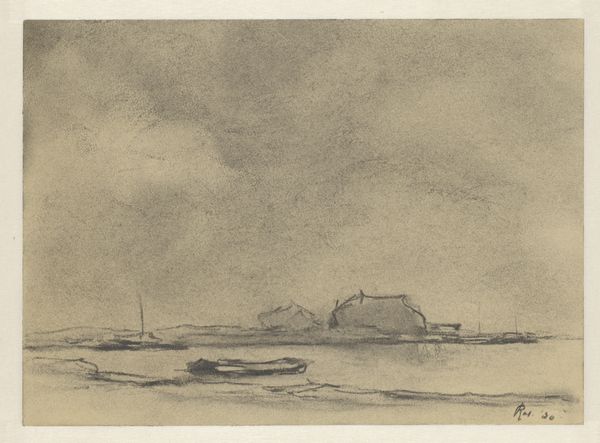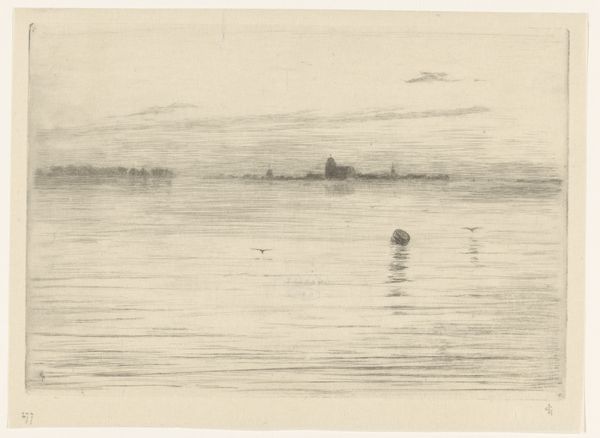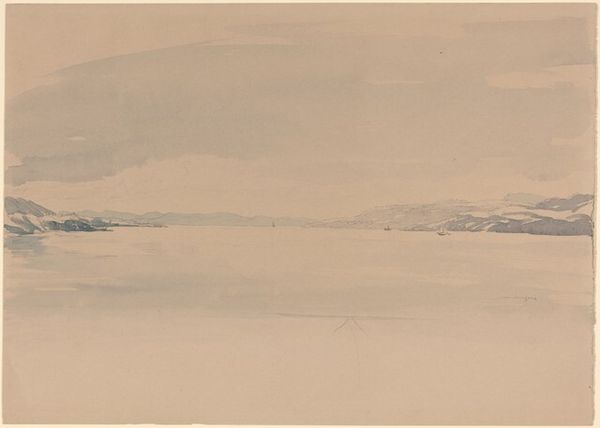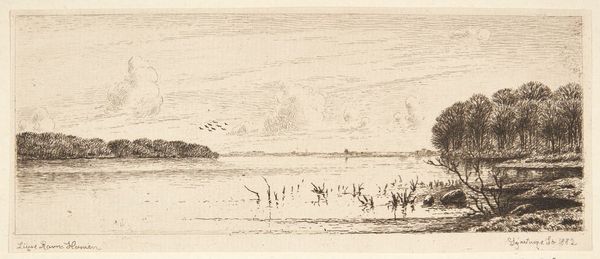
Dimensions: 102 mm (height) x 207 mm (width) (bladmaal)
Curator: This is "Aalsgaard strand ved Christianiafjord," a pencil drawing created in 1894 by Agnes Lunn, currently held at the SMK in Copenhagen. Editor: My first thought is that it feels incredibly subdued. The tones are very delicate, almost ethereal. It's a quiet scene. Curator: Indeed. The drawing, with its reliance on the pencil medium, reveals a mastery of tonal variation. Notice how Lunn articulates space and light. There is a very tangible contrast between the distant landmasses and the foreground vegetation, a demonstration of value that speaks volumes. Editor: And that subtlety also speaks to the conditions for women artists at the time. Restrained perhaps by their access to the same tools as men. Were Agnes' options limited compared to the recognized male landscape artists, forcing her into a corner of "feminine" delicacy? Or, does the picture’s inherent softness provide us a point from which to reimagine ideas around gendered artistic representation, or “taste” as being something more insidious than what appears? Curator: A provocative reading! What I find equally significant is the geometric arrangement—the placement of the small hut against the vast expanse of water, and then two very clearly positioned rocks that could either signal or destabilize spatial relations, which the formal structure ultimately emphasizes over any inherent narrative value. The texture! Editor: Though it presents as an idyllic scenery, I believe its apparent quietness, that pervasive grey tonality, can perhaps be viewed as a document of its historical context. Denmark in the late 19th century. Industrialization had started. There were changes within societal structures... Could Agnes Lunn’s work serve to memorialize a fleeting, pre-industrial landscape, marking the changing relationship with nature due to historical contingencies, as she and other female artists gained professional independence, however uneven? Curator: I see your point about change and the historical milieu informing her representation, but one could equally posit that these shapes – that shoreline – is about form, texture, line, and how these elements combine to elicit a purely aesthetic response independent of any socio-political condition, or independent to the artist's biography. It really captures how Impressionism emphasized sensory experience above all. Editor: But isn’t that sensory experience shaped *by* such conditions? Food for thought indeed! Curator: Indeed it is. It will stay with me.
Comments
No comments
Be the first to comment and join the conversation on the ultimate creative platform.

